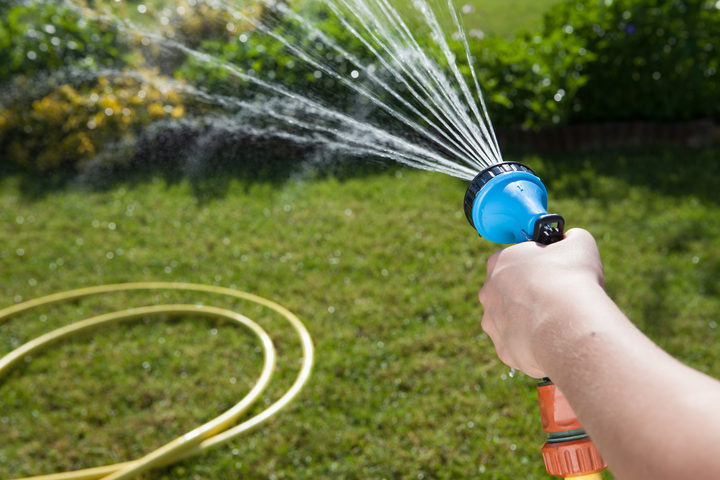This is worth listening to because it describes what Pam and I have been describing, namely that such rain as we have been having is sufficient to give a flush of green but insufficient to moisten the subsoil.
It is my contention that we have seen droughts come and go within the context of a longer-term process of drying. The only basis I have for saying this are the observations we have been making over a few years at Makara and the Hutt
River.
The official narrative does not back this up but talks only of the latest emergency. Every summer for a while now there has been a dry or drought somewhere in the country.
Name the last time when the summer was WETTER than usual.
Dry weather prompts push for water limits in Tasman
3 February, 2019
Water cuts of 50 percent will be in place from Monday for consent holders on the Waimea Plains, and will soon expand across the district as water flows run very low.
Mayor Richard Kempthorne said at the moment staff did not have the authority to enforce a water use bylaw that applied to householders.
Right now, it was against the rules in some areas to water gardens with a hose, but staff did not have the power to stop it.
Mr Kempthorne said this would be rectified at a special meeting.
"I requisitioned it as what we're looking at delivering is delegations to staff to give enforcement powers for the urban water bylaw that we have, because at the moment the staff don't have that authority to enforce the bylaw."
Mr Kempthorne said the district was on the verge of a significant water shortage, and for everyone in the community to be treated fairly when rationing came in, staff needed the ability to take action if people were not respecting the restrictions in place.
 The council will act on tip-offs if people report others they see using hoses. Photo: 123RF
The council will act on tip-offs if people report others they see using hoses. Photo: 123RF
He said if people were seen hosing their gardens or lawns during a ban, or if there were green lawns that were obviously being watered, or any signs of excessive water use, then staff could step in.
He said it did not mean council staff would be driving around checking, but would rely on the usual means of acting on phone calls from residents and following up.
"It's not that the council would smack people with a fine, but to talk with homeowners to let them know there's a water shortage," Mr Kempthorne said.
"If people refuse to follow suit and do what's reasonable, then it gives staff the power to enforce."
He acknowledged some homeowners could have their own water tanks.
The Tasman council has recently signed off on a project to build a $105 million dam south of Richmond, ending almost two decades of planning and increased public opposition over growing costs.
Mr Kempthorne said once the dam was built, it would take exceptional circumstances to impose rationing on the Waimea Plains.
"There will be enough water for the irrigators, for the urban supply for Brightwater, Hope, Richmond and Māpua but we don't have it at the moment."
Crops struggling as Tasman region sees early drought
28 January, 2019
Crops in the Tasman region are struggling with the region now in early drought and the driest region in New Zealand.
The Waimea Plains has been left parched as persistent winds and high temperatures drain much-needed moisture from the soil.
"The small, leafy [vegetables] - your lettuces, your spinaches and silverbeet - they're struggling. They're struggling," Mark Connor of Appleby Fresh said.
But the wait for water is only lengthening in the Tasman, and river water levels are getting low.
"Across the region, we're getting to the serious stage. All the rivers are what we call below mean annual low flow, so that's getting low," Tasman District Council's Dennis Bush-King said.
Marlborough District Council has also advised irrigators to monitor their usage and river levels closely.
The Rai River fell below its minimum flow level on Sunday, ceasing all 18 consented water takes.
Most other rivers in the district are dropping and may also become unavailable, including the Wairua River, affecting 39 consents.
Two weeks ago, the Nelson-Richmond area saw around four millimetres of rainfall, but it was dry leading up to that, and NIWA says the next seven to 10 days is expected to be dry overall.
Up in the hills, hikers have been advised to carry plenty of water, with tanks running dry along popular local trails at a number of huts and campsites.
Tasman Council-owned forests and popular Nelson tracks are now off-limits.
As the water recedes, the water restrictions are increasing, and parts of the region may soon have to cut their water consumption in half.
"Could be as early as next week, and that's when it really starts to bite and hurt," Mr Bush-King said.

The intense, hot weather at the top of the South Island has some farmers worried they could be on the brink of drought



No comments:
Post a Comment
Note: only a member of this blog may post a comment.